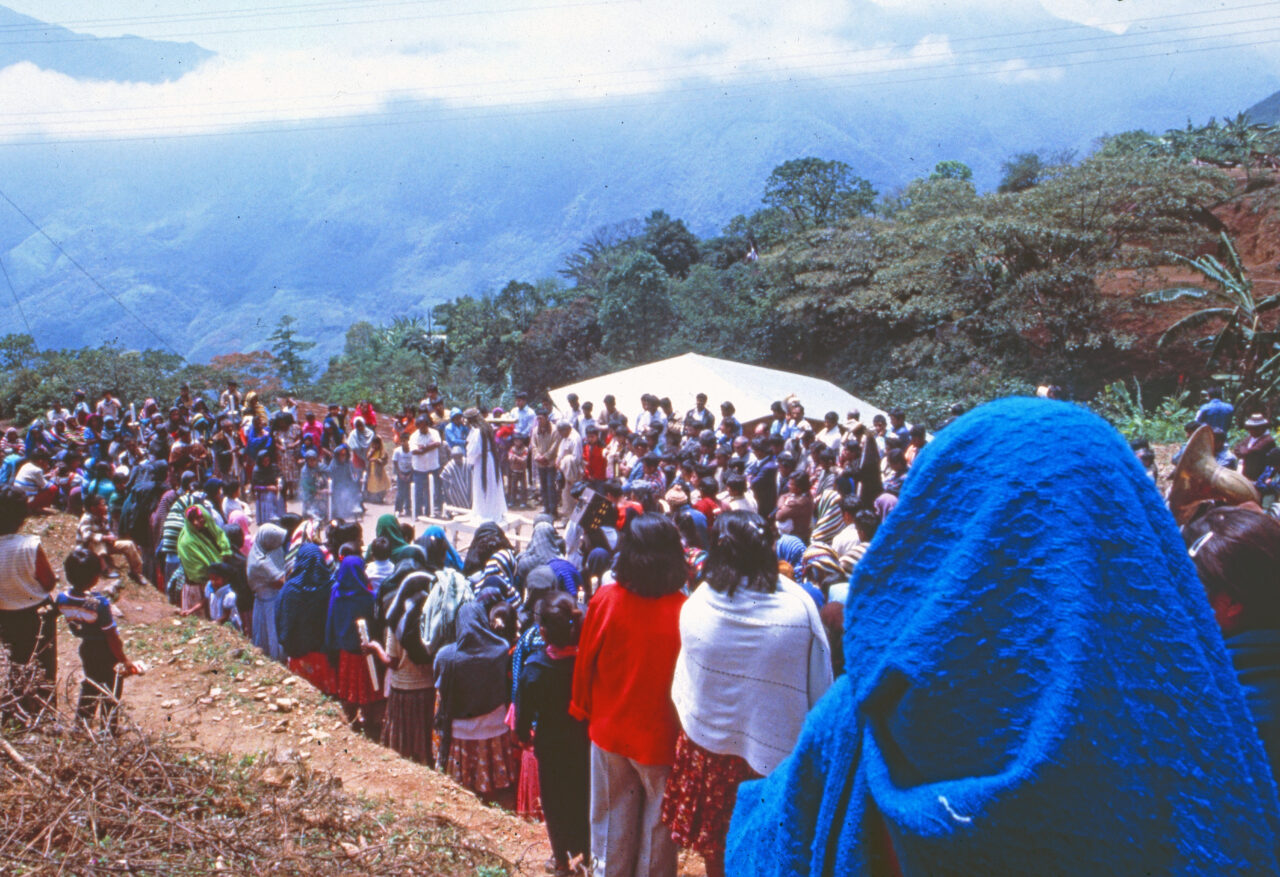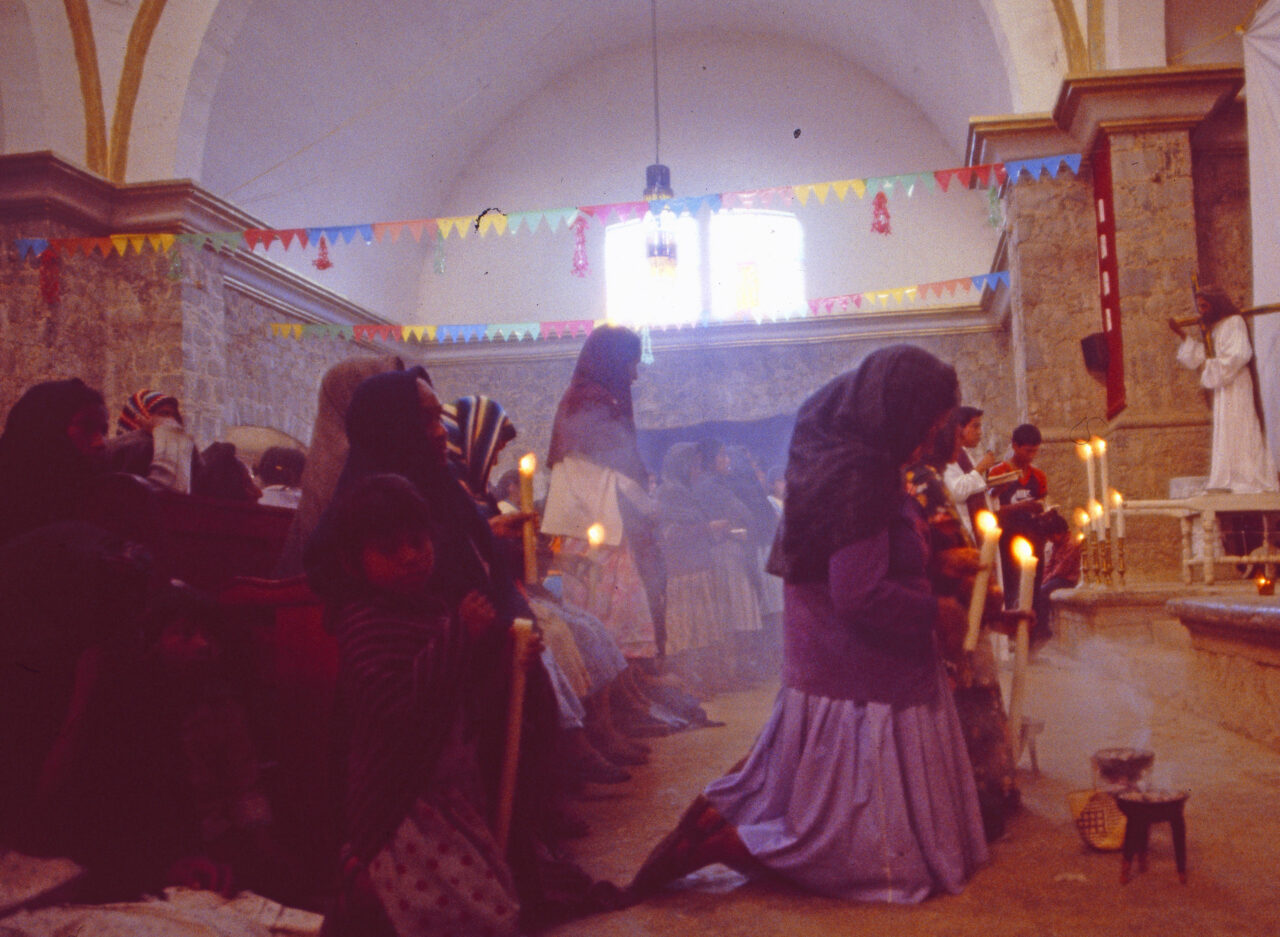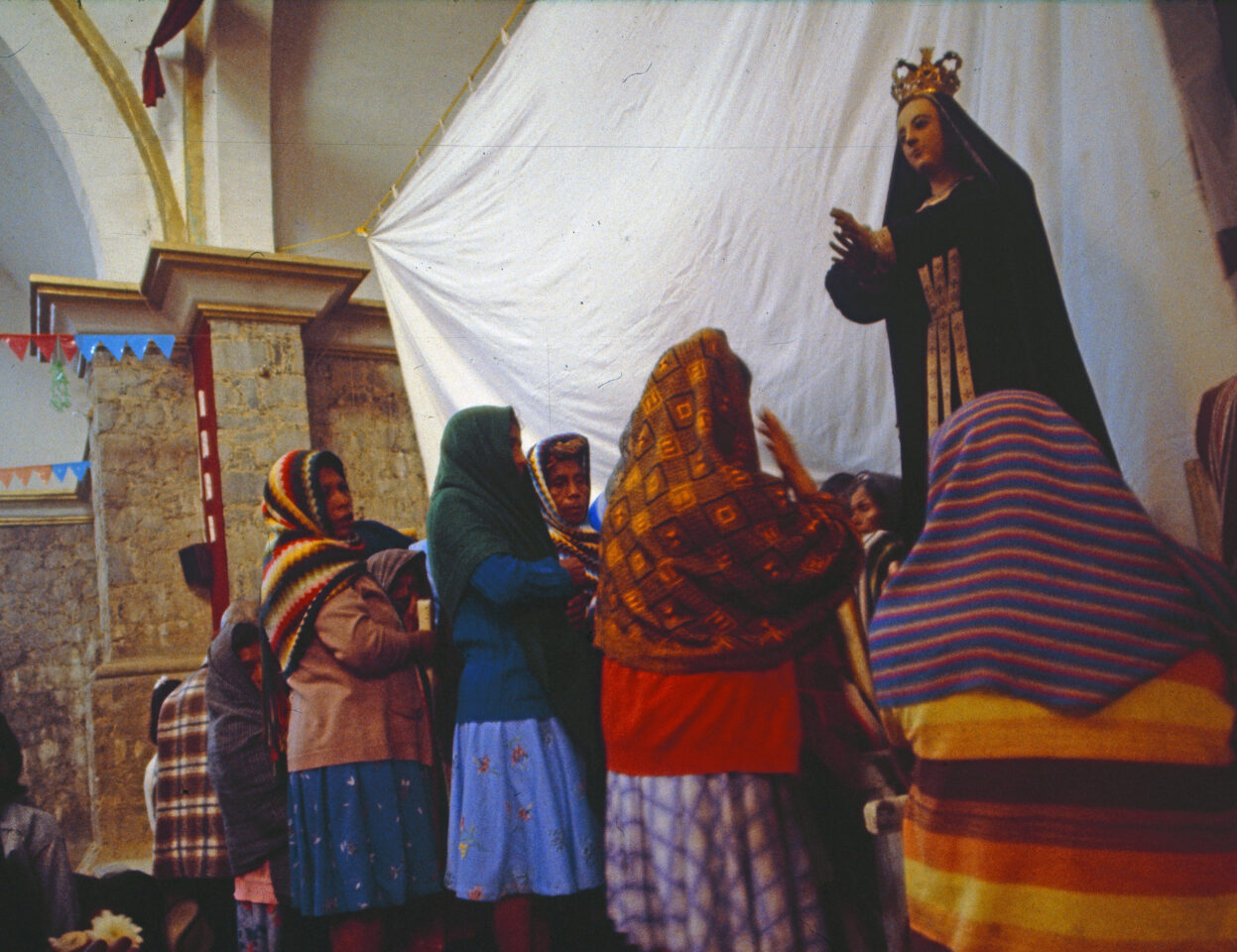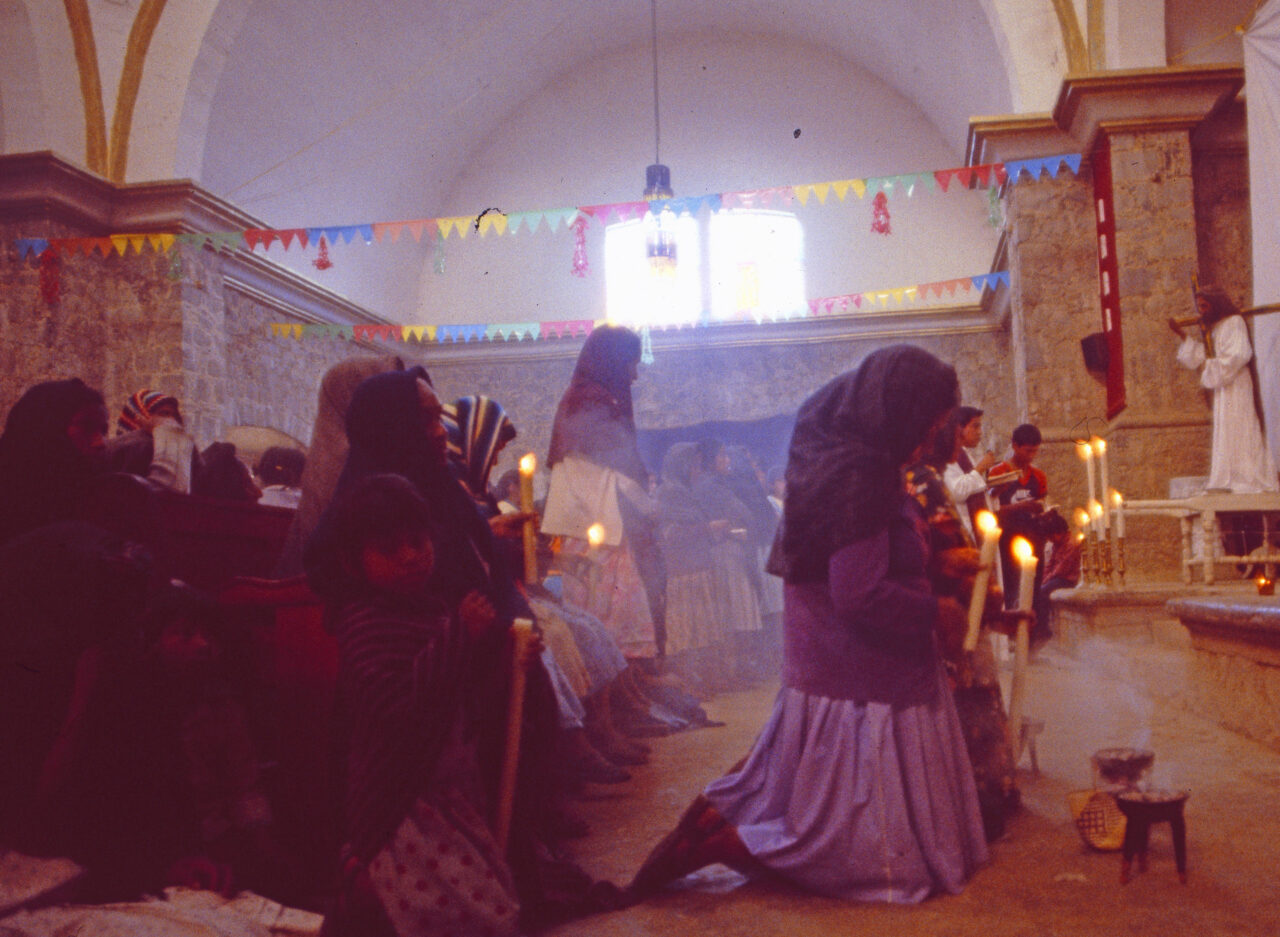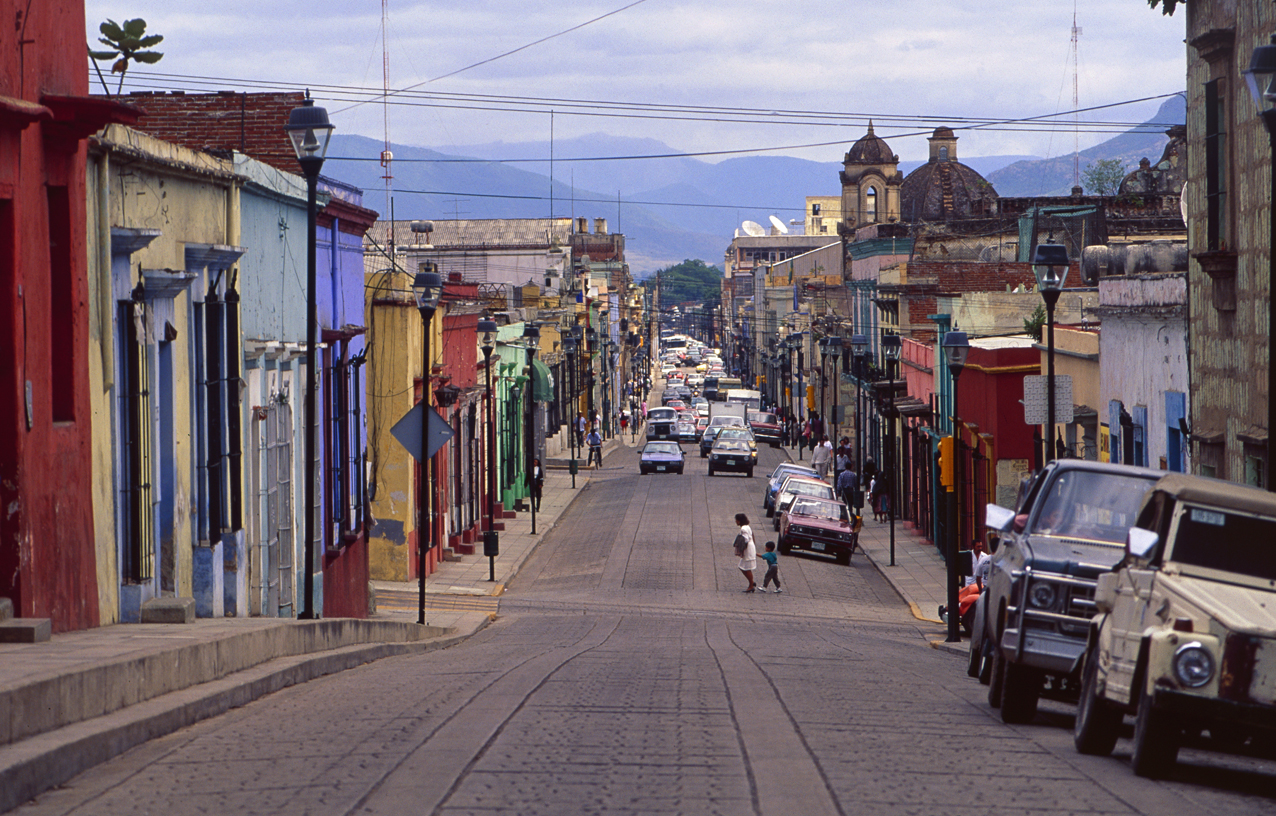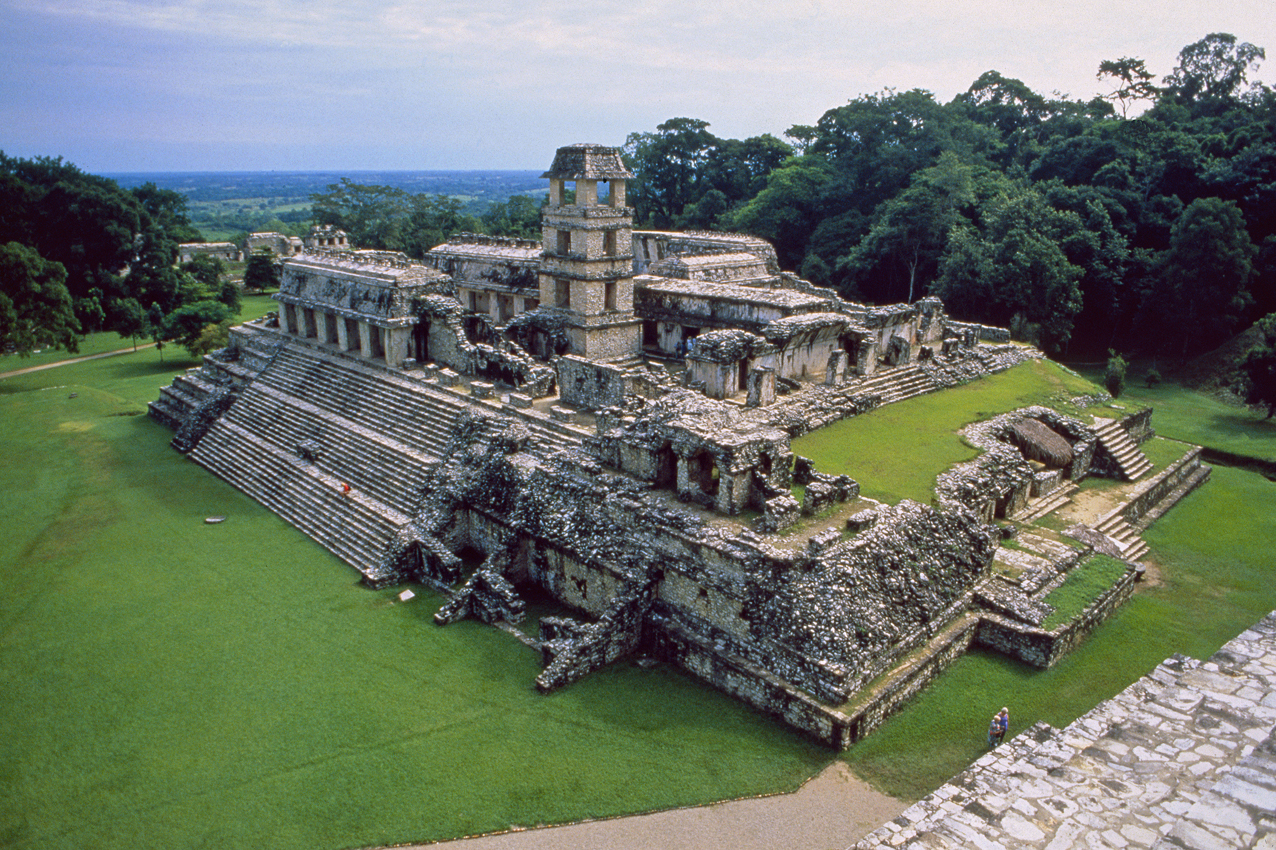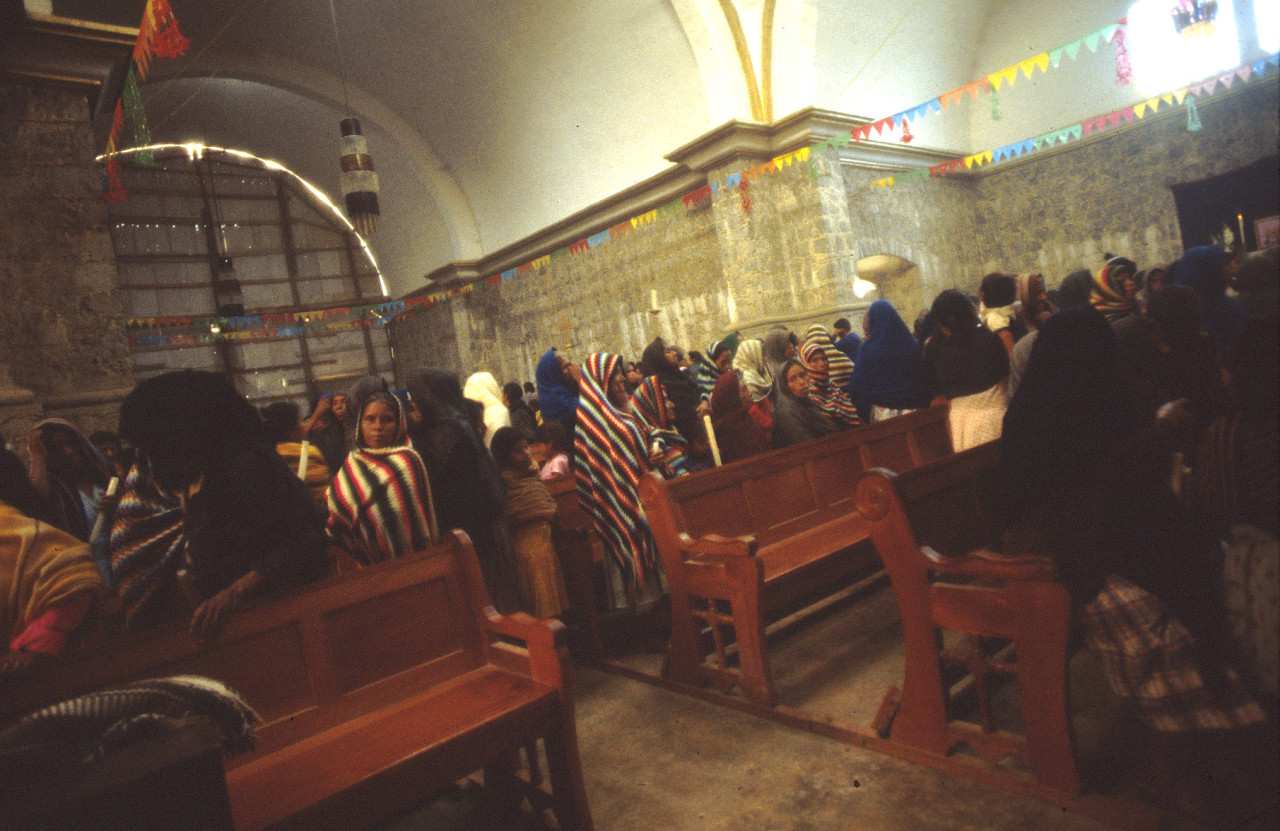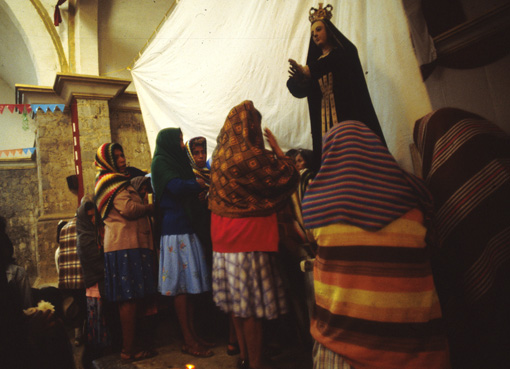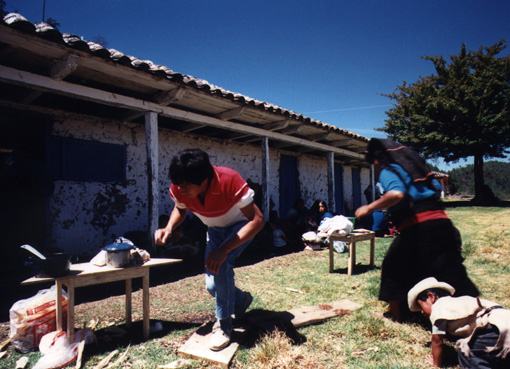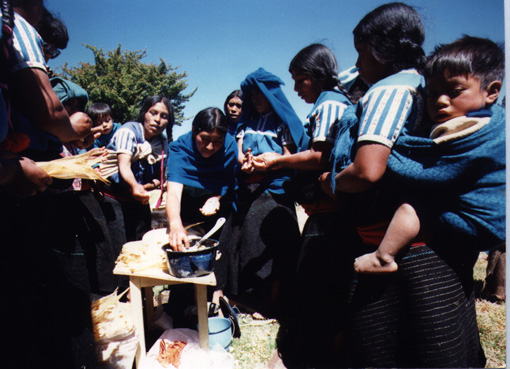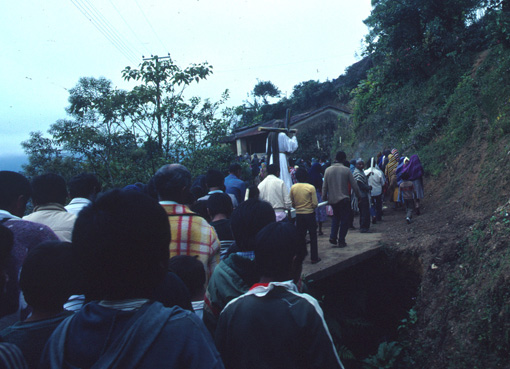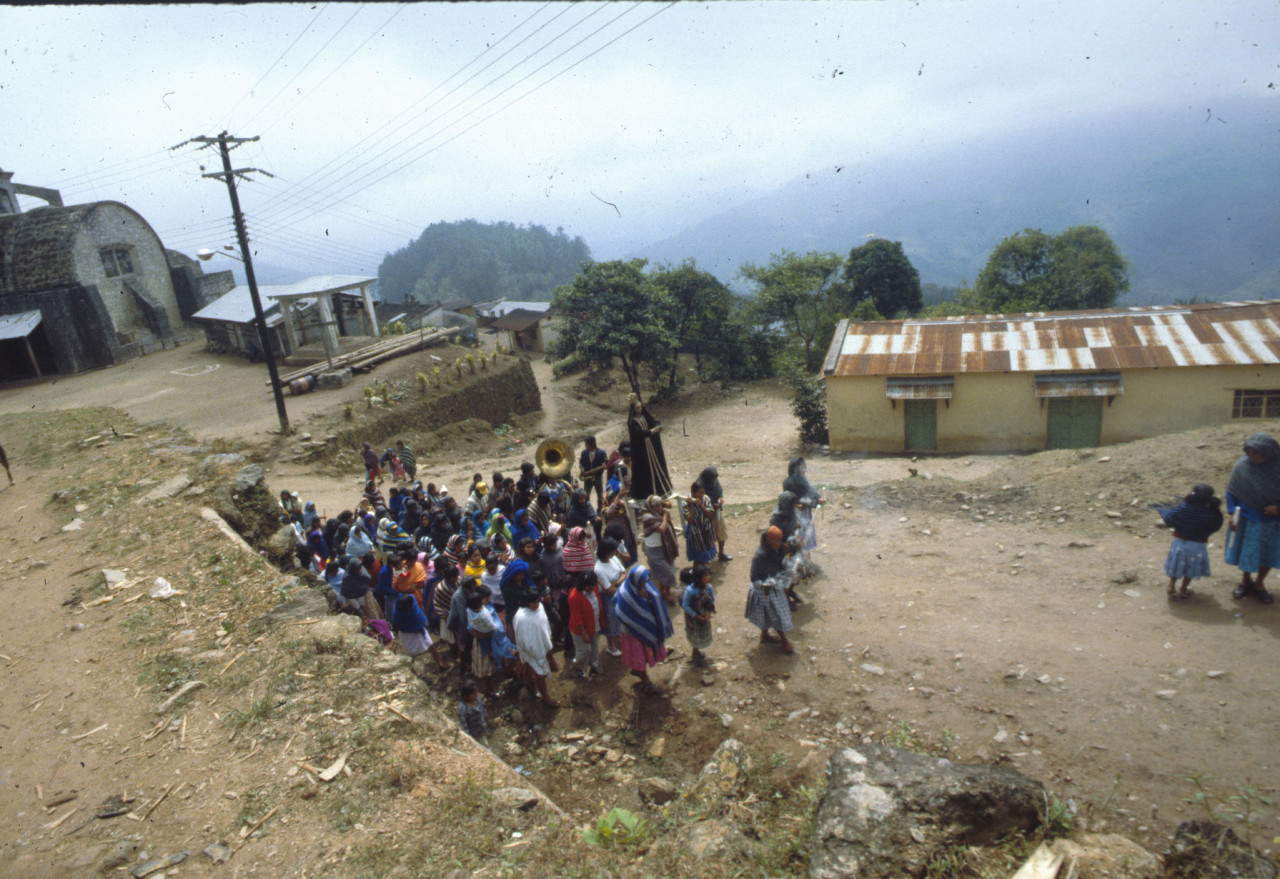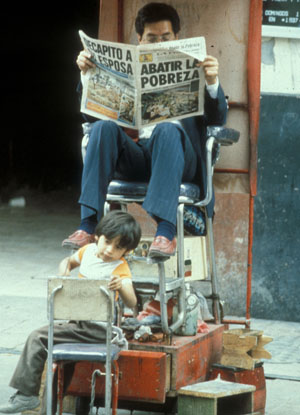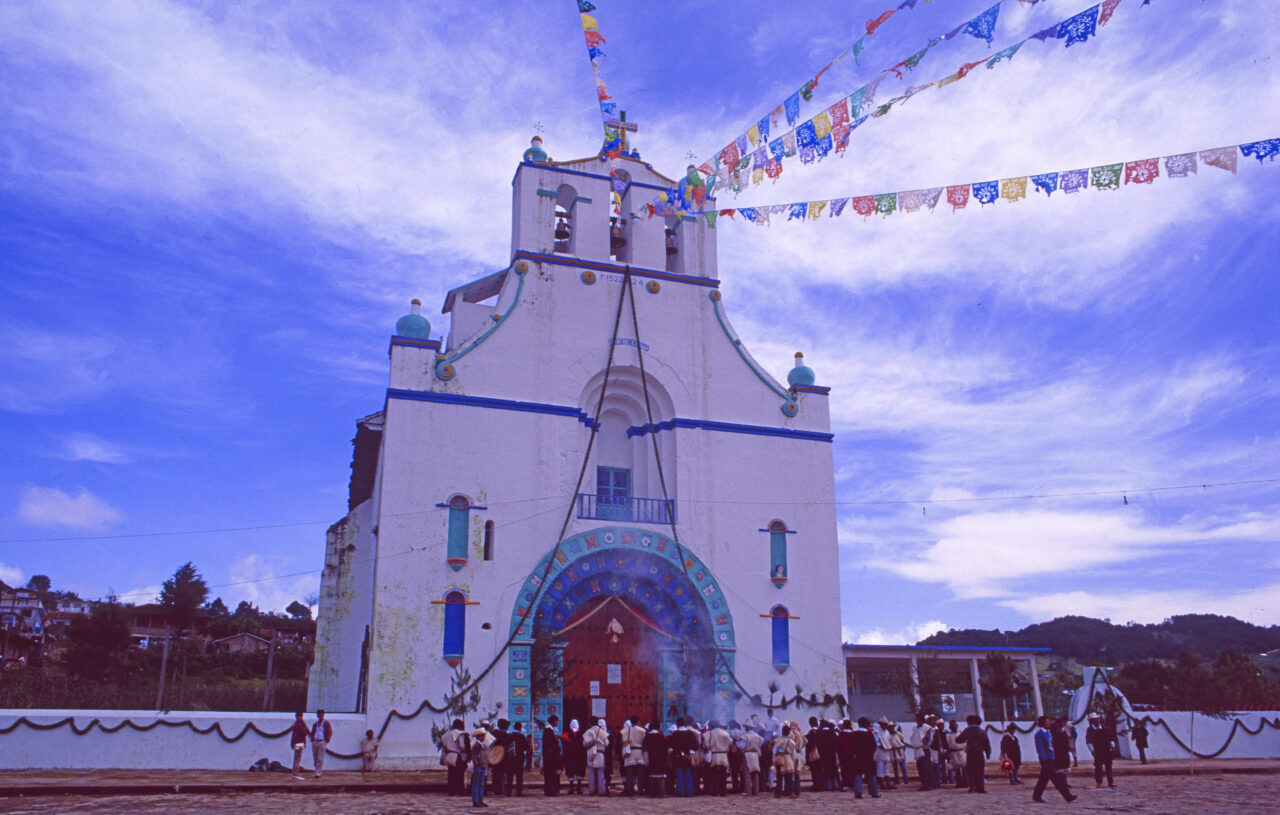
FOREWORD
The author, Gerd Michael Müller, born in Zürich in 1962, traveled as a photo-journalist to more than 50 nations and lived in seven countries, including in the underground in South Africa during apartheid. In the 80 years he was a political activist at the youth riots in Zürich. Then he was involved in pioneering Wildlife & eco projects in Southern Africa and humanitarian projects elsewhere in the world. As early as 1993, Müller reported on the global climate change and in 1999 he founded the «Tourism & Environment Forum Switzerland». Through his humanitarian missions he got to know Nelson Mandela, the Dalai Lama and other figures of light. His book is an exciting mixture of political thriller, crazy social stories and travel reports – the highlights of his adventurous, wild nomadic life for reportage photography .
(please note that translation corrections are still in progress and images will follow soon)
Mexico 89: Mystic Easter Processions of the Mixtecs Indios
Mexico’s face shines brilliantly, the cradle of archaic Indian high cultures. Both the ancient temple complexes and the contrasting, magnificent colonial cities of Oaxaca and San Cristobal de las Casas stand out like dazzling jewels from the Sierra Madre. In the homeland of the Tzotziles, Tzetales, Chamulas and Lacandones, the indigenous people are about as primitive as the people of Valais or Grisons. And yet these cultures, the history and the landscape are in no way equal to ours. Their cultures are more close to nature, more anarchic, more clannish and far more spiritual. In the highlands of Mexico, one of the oldest peoples in Central America, the Mixtecs, celebrate their impressive Stations of the Cross processions every year. The ceremony represents a strange symbiosis of Christianity and the deity world of the Mixtecs. In deepest religiosity, the Indians worship both Jesus Christ and Mary Virgin, the Virgen de Guadaloupe, and their charismatic hero Rey Condoy, who saved them from annihilation and oppression.
From 200 to 900 AD, in the temple city of Monte Alban, the Zapotecs ruled over all of Central America. For unknown reasons, they left the stronghold located near Oacaxa, which was subsequently occupied by the Mixtecs. I spent a few days in Oaxaca, a magnificent colonial style city and visited the impressive cult sites such as Mitla, Zaachila and Yagul. Back in the picturesque old town,, on my way to pick up my laundry, I happened to glance in at a backyard where a woman with long, curly hair was standing at a peculiar machine doing a job that made me curious. She noticed my presence and called me in, whereupon I saw what she was doing. She was standing in front of an ancient French lithography machine from the early 19th century and was printing some lithos. Unexpectedly, I had walked into the studio of the famous Oaxacenian painter Tamayo. We struck up a conversation and did so for over two hours. Her name was Marcela Vera and she told me that she was going to the mountains over Easter to visit the Indians and their processions over the holidays because she wanted to bring textbooks to a teacher. This sounded tempting and inspired me, because I had always wanted to go to the Indios, for whom I had a soft spot since my childhood through the Winnetou movies. He was the role model in my childhood, the Apaches my inspiration.
So I immediately joined Marcela Vera and so the next morning we took the public bus into the mountains to Zacantepec at an altitude of almost 3000 meters. The ten-hour ride was adventurous and very arduous. Holding the top handle the whole time, I stood between sacks, chickens and children sitting on the ground, constantly rocking back and forth pressed tightly against the other passengers and Marcela as the bus snarled its way up into the mountains over a narrow scree pass road with large, deep holes. There were two rest stops due to the two tire changes. As the only gringo on the bus, I towered over the Indians by a head’s height, after all, and so I could not only see the swaying of the passengers but also unabashedly memorize their furrowed expressions and lively gestures for hours. In Zacantepec the road ended. Here begins the realm of Rey Condoy’s sons and daughters.
In gloomy darkness and thick fog, we arrived in the Zapotec Indio town, which consisted of three stone houses, a zocalo (village square) and a church with a corrugated iron roof. There was a single inn above the only small store that had nothing else to offer except a few clay cans, mustard jars, tubes of mayonnaise a few bunches of peppers, some coffee and mezcal liquor. For a week, there was practically nothing to eat. After only three days, Marcela, the picture-perfect painter, and I were in quite a mystical mood, snuggling ever closer in the cramped, barren, cold room. Our hearts began to throb ever more wildly and soon we were making unrestrained love, until in complete darkness before dawn early in the morning a dark, somber voice in the Indio dialect suddenly rang out from a crackling loudspeaker from the village square, accompanied by heavy somber church music. To this, a melancholy music of wind instruments, drums and marimba sounds held through the darkness. We looked out our room window and saw the ghostly fog pouring in from all directions, deeply veiled, ghostly Indio figures streaming toward the corrugated iron church.
We left the room and sought out the church as well. The women had separated in the nave from the poncho-clad men, who for once held their sombrero in their hands to take their seats in the pews. Children and elderly women knelt in front of the incense burners. Sweet-smelling clouds of smoke filled the room and enveloped the padre, who was the only one dressed in a white cassock, giving him a ghostly, mephylike appearance. Now a padre was giving a pastoral speech in the local Indio dialect before a statue of the Virgen de Guadaloupe, the black Virgin Mary. More fascinating, however, were all the awe-struck Indio faces under their colorful rebozos, the scarves they wore as head coverings and slung over their shoulders. The sparse candlelight, the clouds of copal incense and the sea spreading on the floor, smelling strongly of spruce needles, as well as the magnificently decked out honorifics with their silver-studded canes as insignia of their dignity, transformed the nave into a very spiritual and mystical world. I myself felt like an alien in this indigenous community. Flickering candles illuminated all the serious faces marked by hardships. For once, pride melted away. The hard reality masking uncomplicated and cheerful attitude towards life gives way to the revelation of their hardships, worries and fears of their long-suffering indigenous mountain farmer existence.
Then it started! The Indio women shouldered the Virgen de Guadaloupe and the men a statue of Jesus Christ on their shoulders, and then the whole Indio troop moved up the steep mountain. They split into two groups again and I decided to join the women’s torch and candlelight procession and so we nimbly climbed up the narrow, slippery paths with them. On the way there were a few Stations of the Cross rituals and at the seventh Stations of the Cross the two processions joined at a small clearing in a square around the banner bearers and the women kneeling before their thuribles. Now the Padre gave another speech and just at that moment the sky fully opened for the first time and the sun shone like a divine spell directed at the small Indio community, as if it were specially blessing this gathering. Their chants put me in a trance and it was extraordinary to live this spiritual experience as the only „gringo“ and foreigner among the Mixtec Indians.
Devout and overwhelmed by this authentic spectacle of deepest indigenous and moving emotions, we also became part of this world and merged, so to speak, with them and their ancestors. The Indians must have felt this as well and gave me their trust and pulled me into their innermost circle. When one of the banner bearers came out of the circle of dignitaries and approached us, I was at first very frightened, because I had secretly taken pictures of the reunion of Jesus Christ and the Virgin Mary. I was afraid that they had caught me taking pictures and that I would be offered as an expiatory sacrifice and impaled on one of the lances.
The fear was not unfounded, as tourists have been killed in Chiapas for photographing the local Indians. Instead, as a gesture of their hospitality, I was brought into the center of the procession and allowed to be one of the three banner bearers. What a gesture and honor for me, which touched me very much, since I had been abysmally critical of them for the time being. I was really touched! On many further journeys to the indigenous peoples around the globe I found out again and again that I have a special spiritual connection to the indigenous peoples and obviously also have telepathic abilities to be able to communicate a little beyond conventional language barriers.
Now united, women and men together walk the remaining seven Stations of the Cross until the carved image of the saint is taken down on the Zocalo. The entombment and mass are followed by the burning of Jesus Christ. Now the gods and ancestors are worshipped again in the traditional way. According to Aztec and Mixtec beliefs, divine authority must be acquired, the teacher of the village school of Zacantepec explains to us. According to tradition, Nanauatzin, who dared to jump into the fire the first time, became the sun, while Teciciztecatl, who followed him, became the moon. One thing seems clear, that the Christian god is one of the many gods in the Indio world. Therefore at this point the question is allowed, whether it really plays a role in which God, faith or in which Gods and dogmas one believes? Is Allah better than God and are now the Sunnis, Shiites, Wahabites or Alewites on the right path? The Christians or Buddhists more enlightened? Back to the Indians. At least here there is no „holy war“ proclaimed by humans; the Indians prefer to leave that to the gods.
All the more I opened myself to the Indios and in the following days and other crazy processions I often fell into a trance up to ecstasy, and that without the Nanacatl mushrooms or other drugs like mescaline. Feeding myself only with half a bottle of mezcal liquor a day, I tried to calm Montezuma’s revenge, that is, the stomach upset. As a result of the lack of food and the altitude, the alcohol level had a particularly good effect on the intoxicating trance states. There were no more language barriers and the universally unifying overcame all cultural boundaries. Thanks to the young painter Marcela Vera from the studio of the famous Mexican painter Rufino Tamayo, I learned more and more about the history and identity of the Mixtecs. Henceforth, the indigenous natives on all continents were to interest me particularly, not to say magically attract me.
Witnessing Zapatista Indio Uprisings in Chiapas
10 years after my first extended trip through Mexico, I returned there as a journalist in 1994, when in Chiapas the indigenous uprisings escalated and the Mexican Army soldiers entered the region of the six villages and San Cristobal de las Casas to push back the „MARCOS“ rebels and crush the indigenous uprising. The six letters „MARCOS“ were the initials of the six insurgent Indian communities in the area around San Cristobal: „M „argaritas, „A „ltimirano, „R „ancho, „N „uevo, „C „omitan, „O „cosingo and „S „an Cristobal. Ten kilometers away is San Juan Chamula, the village of the traditional Chamulas, where the uprising began on January 1, 1994. From this arose the „Subcomandante Marcos“, known as the leader and always veiled. The jewel and the crystallization point of the Chamulan world of faith, where God and the gods merge, Christ rose from the cross to be resurrected as the sun, is a baroque village church from the 17th century. There we drove past tanks and roadblocks, military helicopters circled in the sky, and soldiers and troop movements could be seen everywhere. In Ocosingo, during this time when I was there with a nutritionist for infants from the UN Relief and Works Agency (DIF), bullets were flying around our ears and we were lucky that none of them hit us, leaving only bullet holes in the walls of the houses.
The Chiapas uprising was started by the „Ejercito Zapatista de Liberacion Nacional“ (EZLN), a so-called radical leftist movement that rebelled against new state impositions in the state of Chiapas and closely resembled a new edition of the Mexican Revolution. The Mayan Indians were suffering from the free trade agreement of globalization and racist policies in the Mexican administration, and they wanted to resist this because they were being oppressed and excluded from participating in the political process. The conflict began when, in January 1994, an „EZLN“ offensive occupied four towns around San Cristobal de las Casas, whereupon the Mexican military used violence and repression to end the situation on the ground, including the use of torture methods. In 2001, under the leadership of MARCOS, the Zapatistas made a march from Chiapas to Mexico City, and on January 1, 2003, they took San Cristobal de las Casas. Only after that did more and more NGOs advocate for peace negotiations and put pressure on the government. In the end, however, the fate of the indigenous communities did not change much for the better.
After escaping this incendiary place, I experienced another severe earthquake in Chiapas and a turbulent hurricane in Yucatan. So Mexico has really not spared with impressions, it has always been a hellishly hot country, not to mention all the drug cartels that were fighting each other bestially at that time. Impressive was the river trip through the Sumidero Canyon, on whose slippery rock walls up to 1000 meters high, experienced climbers could pull themselves up over the heads of ravenous crocodiles and dozens of vultures were already waiting for possible victims. The misty valleys and enchanting lake and river landscapes of Lago Monte Bellos on the Guatemalan border and the wildly gushing cascades of Agua Azul were also among the highlights of this trip. I avoided, if possible, the tourist strongholds, such as Acapulco, Cancun in the state of Yucatan, Ixtapa in Guadalajira and Loreto as well as Los Cabos in Bahia de California and preferred small dreamy places such as Puerto Angel north of Huatulco. For this I also visited as many Mesoamerican temples as possible – from Teotihuatlan to Monte Alban, Palenque, Chinchen Itza and Uxmal and was deeply impressed by the sophisticated architectural masterpieces of the local indigenous high cultures with their apocalyptic drug use. For one thing has meanwhile been scientifically proven and has come to light: The high priests owed their power and wisdom also and above all to their intensive drug experiences with psychoactive substances from plants and cacti like „San Pedro“, „Nanacatl“, „Ollolqui“ etc. and impressed with their spirituality and the borderline experiences also their surrounding tribes and cultures.
My fascination with indigenous peoples increased steadily with my first encounter with the Mixtecs in the highlands of Oaxaca and with the rebellious Chamulas in Chiapas, and with my later acquaintance with the Khoi San and tribes in Southern Africa. I felt very connected with them and experienced very impressive, not to say extremely supernatural moments and hidden spiritual abilities concerning instincts and intuition and mental abilities like telepathy. If there was (for me) a life before today’s, then I was for sure an Indian, a shaman or a bushmann. I was especially impressed by the second highest South African Sangoma healer Credo Vusama Mutwa, who also attested to my healing qualities and extraordinary abilities and with whom I could have done an apprenticeship. „Eagle Eye“ I was called at Tzotziles and at a shaman meeting in La Valle Dieu, France, where the Sun Dance was performed and hundreds of shamans from all over Europe met, the head guru had assigned me the name „Clever Fox“. With the Aborigines, I myself was amazed at my archery bull’s-eyes at the first attempts. So there were things that I had never done before, and in doing so, brought about abilities that must be somewhere in ancient genes. Later, I had encounters with numerous Indian tribes in the Amazon, in the highlands of Peru and later with the original Asian cultures in Malaysia, on Borneo, in Indonesia and on Bali, as well as in the Philippines, in Vietnam or Laos.
But back to Mexico and a glimmer of hope on the blood-soaked horizon, the Latin American country with 35000 murders per year In hardly any other country are politics, authorities, policemen in cahoots and deep in the drug swamp. No less than six large drug cartels fight each other in the most brutal way and terrorize the population. For the most part, the village communities are helplessly at the mercy of the narco and avocado mafia. Not so in Chéran, a town in Michaoacan about 360 kilometers west of Mexico City. In the town of the indomitable and the fearful, a good 20000 inhabitants put an end to the brutal rule of the cartels in April 2011. With machetes, wooden clubs and a few pistols they approached the MAfiosis and drove them out and at the same time also chased all politicians, local and electoral authorities from the mayor to the police all out of the city. Then followed a nine-month siege by the drug lords< and 15 deaths occurred. But the residents of Chéran persevered and rearmed. In 2012, they proclaimed automie, invoking the Mexican Constitution, and formed a new structure with a council of elders, a municipal militia, regular popular assemblies, and so are back to the ancestral (pre-state) system. With two exceptions. The entire region is rigorously guarded by the locals, who are now heavily armed, in order to defend the still acute threat from the cartels by force of arms if necessary. This is an example that shows that resistance is definitely appropriate and can also have a positive effect. The necessary prerequisite for this is the formation of a closed society that has a very strong cohesion.
In Mexico, there is now a project called „Rutopia“ that enables tourists via an app to live together with the indigenous people for a while or to spend vacations in their villages and village communities. This allows the local indigenous population to also benefit a little from tourism and to show guests their way of life and culture, but also to share their worries and fears with them. In turn, guests experience unique access to magical moments away from mass tourism. Personally, I hardly ever booked a hotel and if I did, it was mostly for the first night after I arrived. Then I let myself drift and chose something suitable on the spot and often asked the locals what they recommend. So, when I asked for a place to stay, often good conversations and valuable tips resulted and often the accommodation problem was solved by itself, because I was invited by some people as a guest right away. I liked to swim against the tide and preferred to look for places far away from the mass tourism and preferred small hostels or accommodations with private persons.
So my dear readers, now it goes on to Cuba, the socialist sugar and tobacco paradise that I have visited a total of seven times since 1993. We begin with the very miserable times.
